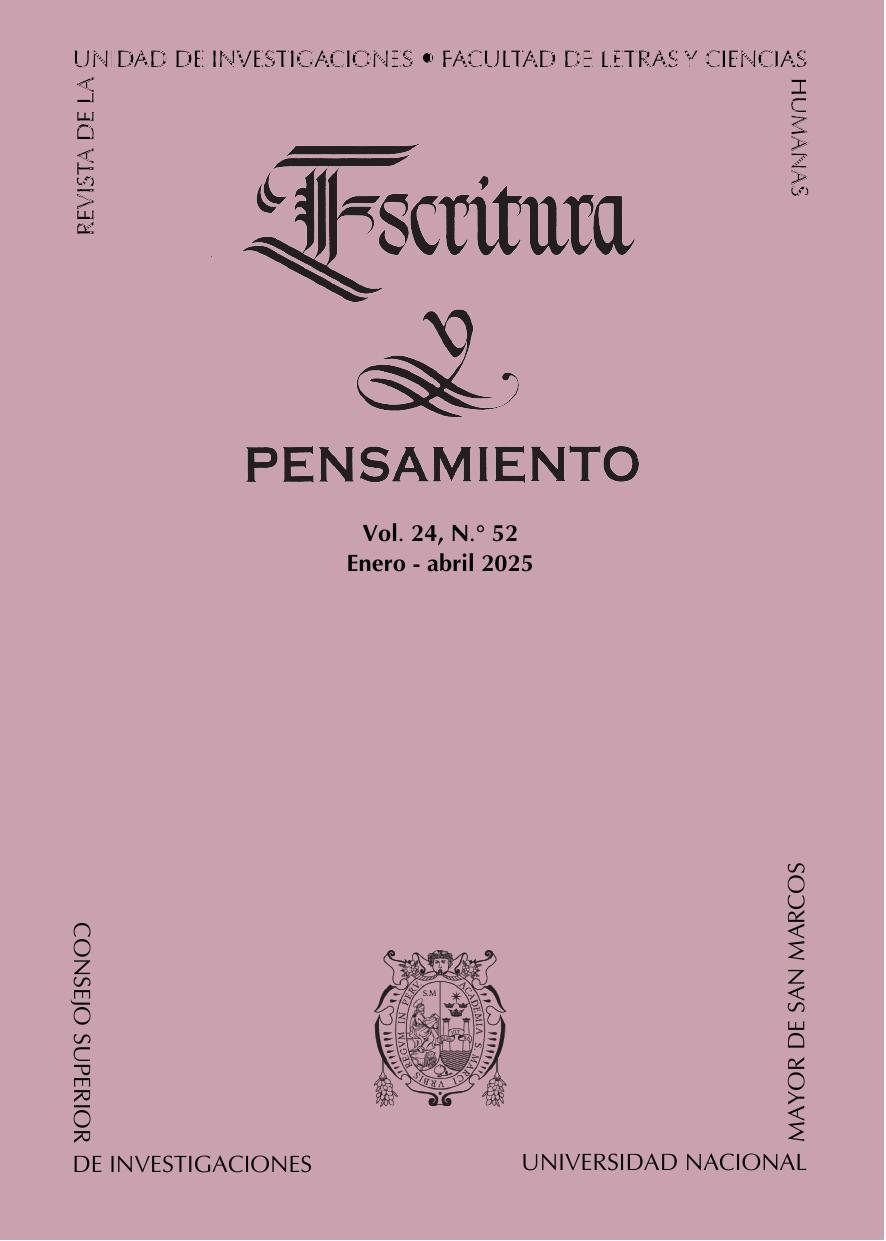Use of ethnomathematical knowledge of distance and quantity in Tarpuy potato in the farming community of Mocabamba, Apurimac
DOI:
https://doi.org/10.15381/escrypensam.v24i52.30126Keywords:
ethnomathematical knowledge, distance and quantity, Quechua people, papa tarpuyAbstract
This article deals with the use of ethnomathematical knowledge during potato planting in the community of Mocabamba, department of Apurimac. This knowledge entails distance and quantity. The Quechua population in the aforementioned community uses ethnomathematical knowledge of distance and quantity for calculation during the potato planting stage. Through the use of distance they manage to calculate the exact measure of the horizontality (the distances that go from wachu to wachu 'camellón to camellón') and verticality (the distances from chuki to chuki 'from well to well') that a potato plant requires for its growth and adequate production. To calculate the amount of seed that will enter a field they use siqa, uchquy, lliklla, 'load, sack and blanket', respectively. Likewise, there is the management of the exact amount required for each hole. It is worth mentioning that in this activity they do not use measures such as meters, weights and other technological elements of modern society. The aforementioned will be solved from anthropology and Intercultural Bilingual Education.
References
Campo Guachetá, D. F. (2017). Rescatando e implementando las medidas antropométricas a través de la huerta escolar desde una particularidad campesina en la Institución Educativa la Laguna Dinde con los estudiantes del grado quinto [tesis de Licenciatura, Universidad del Cauca - Colombia].
D’Ambrosio, U. (1988). Etnomatemáticas: Un programa de investigación en la historia de las ideas y en la cognación. Boletines del Grupo de Estudio Internacional de Etnomatemática ISGEm, 4 (1). http://etnomatematica.univalle.edu.co/
D’Ambrosio, U. (2007). La matemática como ciencia de la sociedad. En J.Giménez, J. Diez-Palomar, y M. Civil (Eds.), Educación Matemática y Exclusión (83-102). España: Graó.
Díez-Palomar, J. (2011). La formación de matemáticas para las familias. Una mirada desde la etnomatemática. Revista Latinoamericana de Etnomatemática, 4(2), 55-69.
Mamani, M. (2010). Etnomatemática y el grado de razonamiento ló- gico matemático, en los estudiantes de educación primaria del Instituto Superior Pedagógico Público Juliaca, 2008 [tesis de Maestría, Universidad Nacional Mayor de San Marcos].
Martínez Marín, A. y Ríos Rosas, F. (2006). Los Conceptos de Conocimiento, Epistemología y Paradigma, como Base Diferencial en la Orientación Metodológica del Trabajo de Grado. Cinta de Moebio, (25), 0.
Mujica Bermúdez, L. (2014). Conocimiento o riqsiy: apuntes para una epistemología en el mundo andino. Qawastin Ruwastin / Viendo y Haciendo. Encuentros entre sujetos del conocimiento en la Universidad (37-70). Lima, Perú: Fondo Editorial de la Pontificia Universidad Católica del Perú.
Mujica Bermudez, L. (2016). Pachamama Kawsan Aproximaciones a la naturaleza y sus cambios en Andahuaylas y Chincheros, Apurímac. [Tesis de doctorado, en la Pontificia Universidad Católica del Perú].
Silva Atillo, L. A. (2017). Implementando las matemáticas desde nuestros conocimientos culturales y tradicionales de la cultura Nasa y la vida diaria del niño y la niña de la Institución Educativa Etnoeducativo de Toez, Caloto, grados tercero, cuarto y quinto [tesis de Licenciatura, Universidad del Cauca - Colombia].
Villavicencio, M. (2011). Las etnomatemáticas en la educación intercultural bilingüe de Perú: avances y cuestiones a responder. XIII CIAEM-IACME, Recife, Brasil, 1-11.
Yucra Yucra, F. E. (2006). Los conocimientos etnomatemáticos y etnolingüísticos como herencia cultural de los aimaras del distrito de Pomata - Puno. [Tesis de maestría en la Universidad Nacional del Altiplano - Puno]. http://repositorio.unap.edu.pe/handle/20.500.14082/710
Yucra Yucra, M. (2020). Sistematización de conocimiento de la etnomatematica quechua, como herencia cultural de los pobladores del distrito de Vilque, provincia de Puno - 2019. [Tesis de Licenciatura, Universidad Nacional del Altiplano].
Downloads
Published
Issue
Section
License
Copyright (c) 2025 Edison Percy Borda Huyhua

This work is licensed under a Creative Commons Attribution 4.0 International License.
AUTHORS RETAIN THEIR RIGHTS:
a. The authors retain their trademark and patent rights, and also over any process or procedure described in the article.
b. The authors retain the right to share, copy, distribute, execute and publicly communicate the article published in the Escritura y Pensamiento (for example, place it in an institutional repository or publish as part a book), with acknowledgment of its initial publication by Escritura y Pensamiento.
c. Authors retain the right to make a subsequent publication of their work, to use the article or any part of it (for example: a compilation of their work, lecture notes, thesis, or for a book), provided that they indicate the source of publication (authors of the work, journal, volume, number and date).





